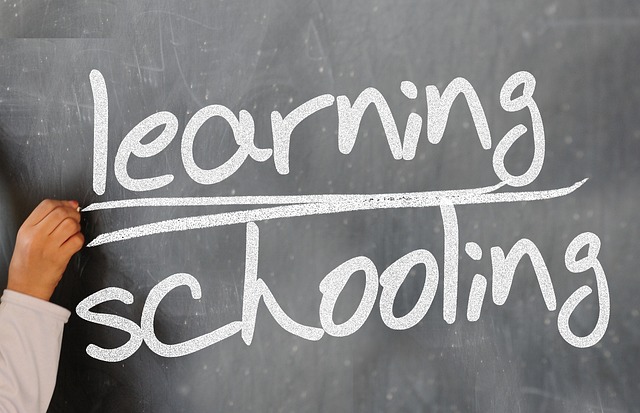In today's digital age, students must balance a vibrant social life with online privacy. Managing your digital footprint through smart social media use is key. This involves understanding that every online interaction leaves a trace on your personal brand. By critically evaluating requests for information, setting clear boundaries, and utilizing privacy tools, you can control your data exposure. Balancing includes designated screen time, face-to-face interactions, and offline hobbies to foster meaningful relationships and overall well-being, ensuring a healthy social life alongside secure online practices.
“In today’s digital age, students navigate a complex landscape where their online presence and privacy play a significant role in their overall well-being. This comprehensive guide aims to empower students with the knowledge and tools to manage their privacy and maintain a healthy balance between their social lives and personal data security. By understanding your digital footprint and learning effective strategies for setting boundaries, you can navigate the online realm with confidence.”
- Understanding Your Digital Footprint and Online Privacy Settings
- Setting Boundaries: When and How to Say No to Sharing Personal Information
- Navigating Social Media: A Balanced Approach to Online Interactions
- Real-Life Connections vs. Virtual Relationships: Prioritizing Face-to-Face Socialization
- Protecting Your Data: Tips for Secure Online Behavior and Privacy Tools to Know
Understanding Your Digital Footprint and Online Privacy Settings

In today’s digital age, students often juggle a vibrant social life with an online presence that can feel like a labyrinthine tapestry. Understanding your digital footprint is a crucial step in balancing social life and privacy. Every post, like, and comment contributes to this invisible trail, which can have both immediate and long-lasting impacts on your personal brand and future opportunities. Navigating this landscape requires mindfulness and a keen awareness of online privacy settings.
Social media platforms offer various options to control who sees your content, how it’s shared, and even how long it remains accessible. Take a dive into these settings to ensure your personal information is shared only with the intended audience. Remember that once something goes online, it can be difficult to erase or control its spread. Balancing social life means enjoying the benefits of connecting with peers while safeguarding sensitive details and maintaining a positive digital footprint.
Setting Boundaries: When and How to Say No to Sharing Personal Information

In today’s digital age, where social media and online interactions dominate our social lives, it’s crucial to strike a balance between connecting with peers and safeguarding personal privacy. Students often face constant pressure to share personal information, from posting about their daily activities to revealing intimate details on various platforms. However, setting clear boundaries is essential for maintaining control over one’s digital footprint.
When faced with requests for personal information, students should learn to evaluate the situation critically. It’s okay to say no, especially when sharing such details could lead to potential risks or discomfort. Practicing assertiveness and communicating these boundaries effectively can foster healthy relationships while ensuring a secure online environment. Remember, protecting your privacy is not selfish; it empowers you to make informed choices about how much information you share and with whom.
Navigating Social Media: A Balanced Approach to Online Interactions

In today’s digital era, navigating social media is a part of everyday life for students. However, striking a balance between online interactions and your real-life social life is crucial for maintaining a healthy lifestyle. The constant buzz and instant gratification of social media can often lead to excessive screen time, impacting your productivity, sleep patterns, and mental well-being. To avoid this, set clear boundaries. Designate specific times for checking platforms like Instagram or Twitter, and stick to them.
Remember that social media is a reflection of curated highlights rather than the full story. While it’s great for staying connected with friends and exploring interests, it shouldn’t replace real-life interactions. Prioritize face-to-face conversations, group activities, and offline hobbies to foster meaningful relationships and create memorable experiences. Balancing your online and offline social life will ensure you make the most of both worlds.
Real-Life Connections vs. Virtual Relationships: Prioritizing Face-to-Face Socialization

In today’s digital era, it’s easier than ever to connect with others virtually. However, balancing social life by prioritizing face-to-face socialization is crucial for maintaining genuine relationships and a healthy social life. While online interactions have their place, especially when distance or circumstances limit physical gatherings, they cannot fully replace the richness of real-life connections.
Engaging in direct, in-person conversations fosters deeper understanding, empathy, and the development of strong bonds. Face-to-face socialization encourages active listening, nonverbal cues, and immediate feedback, all of which contribute to more meaningful interactions. It’s essential for students to set aside dedicated time for studying or working online, but also to prioritize scheduling in-person meetups with friends, joining campus clubs, or participating in local events to ensure a balanced social life that enhances their overall well-being.
Protecting Your Data: Tips for Secure Online Behavior and Privacy Tools to Know

In today’s digital age, students often find themselves navigating a delicate balance between their social lives and online privacy. Protecting your data is no longer just about setting strong passwords; it involves adopting secure online behaviors to safeguard your personal information. Start by being mindful of what you share on social media platforms. Regularly review your privacy settings and limit the exposure of sensitive details like home addresses, phone numbers, or financial records.
Utilize privacy tools designed to empower users with control over their data. Look for options that allow you to anonymize your online activity, block tracking, and encrypt your communications. Passwords managers are also an excellent addition to your security arsenal. They help create unique, complex passwords for each account, reducing the risk of unauthorized access. By combining these practices, you can ensure a healthier balance between enjoying your social life and maintaining robust privacy protections.






